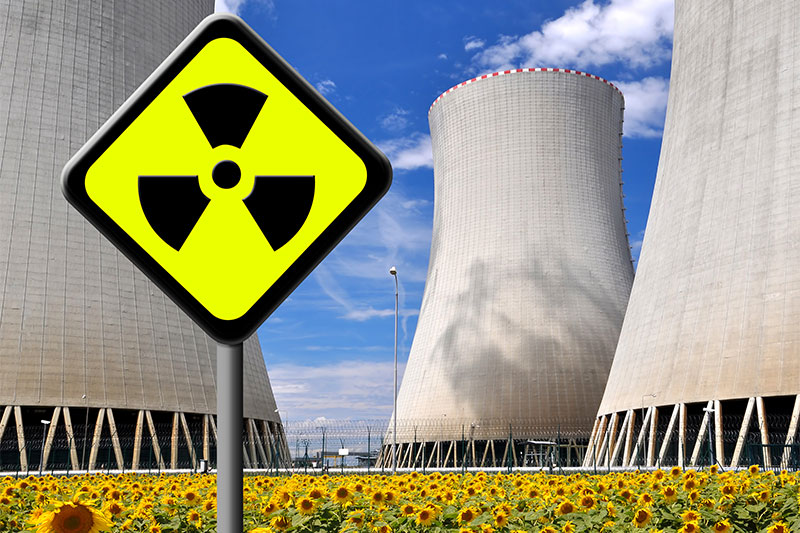A passing interest in pop culture will make you aware of HBO’s TV series Chernobyl. The show dramatizes the 1986 Ukrainian nuclear disaster, has earned rave reviews, and educated countless viewers. However, sunflowers played an important role in the aftermath of the devastation. You may need to be aware.

It may surprise you, but sunflowers are crucial for nuclear disaster clean-up. The reason for this is that they absorb toxins from the ground as well as local ponds.
In addition to brightening desolate scenes, sunflowers improve air quality and speed up water purification. Consequently, the sunflower has become a symbol of peace and a nuclear-free world.
Sunflowers And Their Scientific Attributes
Scientists refer to sunflowers as hyperaccumulators, meaning plants can quickly absorb toxicity. The Chernobyl, Hiroshima, and Fukushima nuclear disasters might have been avoided if the locals had been a little more green-fingered.
Sunflowers can accelerate the repair of radiation-damaged terrain. Sunflowers absorb nutrients from the ground like all plants. In addition to absorbing and retaining good stuff, sunflowers also absorb and contain toxic metals. A sunflower’s long stem is particularly useful for storing lead.
In areas with rows of sunflowers, land pollution dropped by over 40%. Government bean counters acknowledge this and take action. It is cheaper to plant sunflowers than dig up and replant large quantities. It is also important to remove toxins.
When a beautiful field of sunflowers needs to be disposed of, it’s a sad day, but it’s certainly better than living on contaminated land.
The Sunflowers in Chernobyl

After the Chernobyl disaster, sunflowers were discovered to hurt polluted land. As a result, the nuclear wasteland continued to thrive despite losing life and sprouting new plants. This prompted scientists to plant new seeds at Chernobyl.
They were surprised to learn that sunflowers grow in the desert. Heavy metals, in particular, could be absorbed from the ground by these organisms. So, in addition to sucking toxins from local ponds, they also absorbed them. Having a safe water supply is essential to any nation, and sunflowers have played an essential role in ensuring this.
It is now standard practice to plant sunflowers, mustard seeds, flax seeds, and soybeans (believed to be equally effective, if not as aesthetically pleasing) in the event of radiation. Consequently, the sunflower has become a symbol of peace and nuclear-free living.
This historical tragedy made Ukrainian officials lose faith in nuclear weapons quite understandably. Until Chernobyl, the nation had 1,900 nuclear weapons. Afterward, Russia dismantled them all. Ukrainian nuclear weapons were officially banned in 1996. Ukrainian, Russian, and US ministers planted sunflower seeds at a disused missile base to commemorate this milestone. As a result of a nuclear war, this new symbol of hope now grows in the area that once housed warheads.
What About The Sunflowers in Japan?
Japan is another country that is very familiar with the tragedy of radiation. Two tragedies have touched this nation, the 1945 Hiroshima bombings, and the 2011 Fukushima Daiichi nuclear disaster.
There are now over a million sunflowers growing at the Serakogen Farm in Hiroshima. Tourists are welcome to visit this part of the devastated territory. During the summer months, people flock to the site to observe the sunflowers in bloom and remember those who have passed away.
Unlike the incident in Fukushima, the Fukushima incident was much more recent. Nevertheless, many Japanese citizens still feel the pain of the accident. As a result of an earthquake and tsunami, the Fukushima Daiichi disaster still has repercussions.
The cleanup process is expected to take around 40 years, and radiation exposure may cause even more deaths. Food products produced up to 60 miles from the site are suspected to be contaminated.
Sunflowers, however, continue to play an important role in repairing this desolate area. This flower has been planted over 8 million times. Ambition is always twofold.
Sunflowers offer some relief from an otherwise barren wasteland that is a stark reminder of a dark day in Japanese history. In addition, they will significantly increase the safety of the territory. The process may even be sped up if they have some good fortune.
There is more to sunflowers than just their beauty. Nuclear disasters have become a cautionary tale of the past but a symbol of hope for the future.
No amount of flowers can undo the tragedy. However, sunflowers will serve as a reminder that nuclear power is capable of causing devastation as well as making up for outdated policies.


